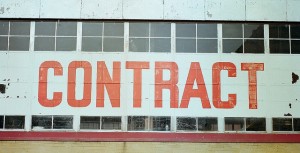 An ongoing case in the New York Supreme Court, a court of first instance, shows the danger of signing a fashion model release agreement which is both vague and wide in scope. The case is Velon v. Di Modolo International LLC.
An ongoing case in the New York Supreme Court, a court of first instance, shows the danger of signing a fashion model release agreement which is both vague and wide in scope. The case is Velon v. Di Modolo International LLC.
Plaintiff Stella Velon is a model and an actress. She alleged in her complaint that she attended a casting call in the office of AM Public Relations in New York City in the summer of 2011. Her pictures was taken a few weeks later for what she thought at the time to be a test shoot to be used to pitch marketing ideas for upcoming advertising campaigns. She was paid 400 dollars in cash for her work directly by the photographer. Ms. Velon further alleged in her complaint that she received an email from the AM Public Relations company a few days after the shoot, asking her to execute a release. The email read:
In exchange for consideration received, I hereby give permission to DiModolo (sic) to use my photographic likeness in visual forms and media for advertising campaigns, magazine or billboard, magazine editorial, lookbook, print, and any other lawful purposes ONLY for Dimodolo (sic).
Plaintiff stated in her complaint that she thought this was just “an afterthought in conjunction with the test shoot, a ministerial piece of paperwork that someone had forgotten to secure at the lime of the test shoot and to be used in conjunction with the test shoot.”
But she discovered later that her photograph, showing her wearing Di Modolo jewels, had been used in a Di Modolo advertising campaign. It had also been also featured on billboards in Miami and New Jersey, in print ads, on phone booths and kiosks in New York City, and on postcards given to customers at Di Modolo kiosks in major department stores, including Bloomingdale’s. The ad was also used on social media. A slightly different version of the ad was used by Bloomingdale’s, with the name of the retailer displayed along with Di Modolo’s.
Plaintiff then sued Di Modolo for violation of her right of privacy and publicity, fraudulent inducement, negligent misrepresentation, unjust enrichment and conversion and also sued Bloomingdale’s for violation of her right of privacy and publicity, unjust enrichment and conversion. All of Plaintiff’s claims were dismissed by the New York Supreme Court on May 16, except for right of privacy and publicity claim against both Di Modolo and Bloomingdale’s regarding the Bloomingdale’s ad.
Right of Publicity in New York State
The unauthorized commercial use of an individual’s likeness is protected by the “right to publicity.” Indeed, a person’s likeness can have great commercial value, if this person is an actor, a public figure, or, as in this case, a model.
New York State does not recognize a right of privacy at common law, but one of its statutes, Civil Rights Law §§ 50 and 51, recognizes a right to publicity. It provides a cause of action for injunctive relief and damages. if “[a] person, firm or corporation…uses for advertising purposes, or for the purposes of trade, the name, portrait or picture of any living person without having first obtained the written consent of such person, or if a minor of his or her parent or guardian.”
Scope of the Release
Plaintiff noted in her complaint that the release did not refer “to any particular photograph or photographs that were taken on any particular occasion.” It did not contain any territorial or temporal limitations either. Plaintiff pointed out that, if one reads literally the release she executed, Di Modolo has the right to use any of her images for any purposes. Indeed, as written, the photographs could be used everywhere and forever and ever.
Plaintiff argued that her case was similar to the Harlock v. Scott Kay Inc. case, (N.Y.App.Div.2005), where the court had found that a “Model Release” which had been signed by a model in connection with two modeling sessions was not an enforceable contract because the spaces for the insertion of essential terms had not been filled. But the New York Supreme Court did not find the Harlock case persuasive as the release Plaintiff had signed was unlimited, whereas essential terms were not stated at all in Harlock.
Di Modolo moved to dismiss the right of publicity cause of action, arguing that New York Civil Rights Law §§ 50 and 51 creates a right of action only if a person’s likeness was made without that person’s written consent, and that, in this case, Plaintiff had signed the release. That argument convinced the court which dismissed Plaintiff’s Civil Right Law claim.
However, the court did not dismiss Plaintiff’s claim for unauthorized use of her likeness against both Di Modolo and Bloomingdale’s to create the Bloomingdale’s advertising, because the release that Plaintiff had executed was only in favor of Di Modolo.
How To Read a Fashion Model’s Release Agreement 101
A model release is a contract which states who has the right to use the images taken of the model, how, and for how long.
A fashion modeling agreement should indicate the timing (how long?), the territory (where?) and the scope of the modeling services (the model is paid to do what, exactly?). If the modeling agreement you are asked to sign does not clearly state how long your image can be used, where it can be used, and what you are paid to do, well, do not sign it before having it reviewed by an attorney.
- Nature of the Use
A modeling agreement should clearly state which services the model is asked to perform and for what purpose. Is the model hired to shoot a video, or to be part of a fashion show, or, as in the case discussed above, to be photographed for a test? Will the photography be only used in print, or will it shown also on television?
It is important to know exactly why you have been asked to work. Getting work is always great news but rushing into signing just any contract is not a good idea at all.
- Timing
You also need to know how long the other party to the contract will have the right to use your image. It may be only for one time, say, the day of the fashion show. In any case, the contract must indicate clearly the date of the termination of the contract.
Be careful when the contract contains language such as “present or future” and/or does not indicate any dates. You do not want to give up the right to use your likeness in perpetuity, especially as the value of your image may increase in the future. The release should state a clear and fixed amount of time during which the contracting parties will have the right to use the image.
- Territory
Where will the other party to the contract have the right to use your likeness? Will it be in the U.S. only, or will the other party have the right to use your image in a foreign country?
- Consideration
How will you be compensated for the use of your image? How will you be paid and when?
Needless to say, this little 101 paragraph is not legal advice. It is best to consult an attorney before signing a fashion model agreement.
Image is Contract courtesy of Flickr user Steve Snodgrass under a CC BY 2.0 license




